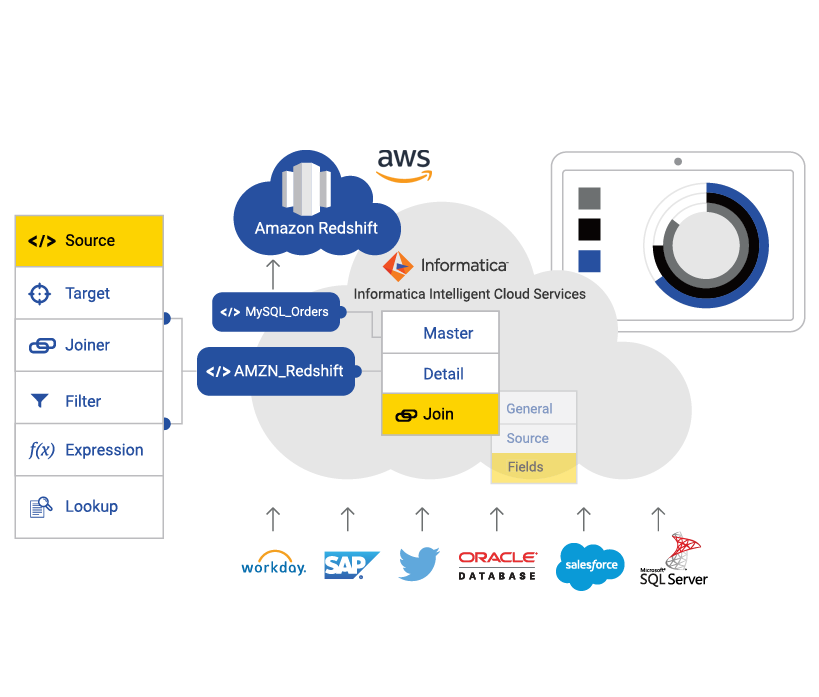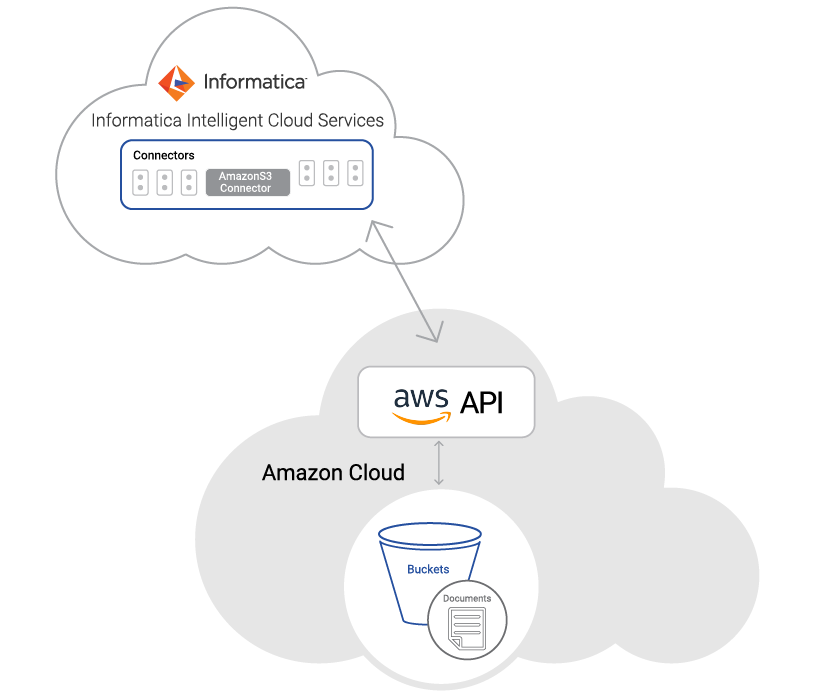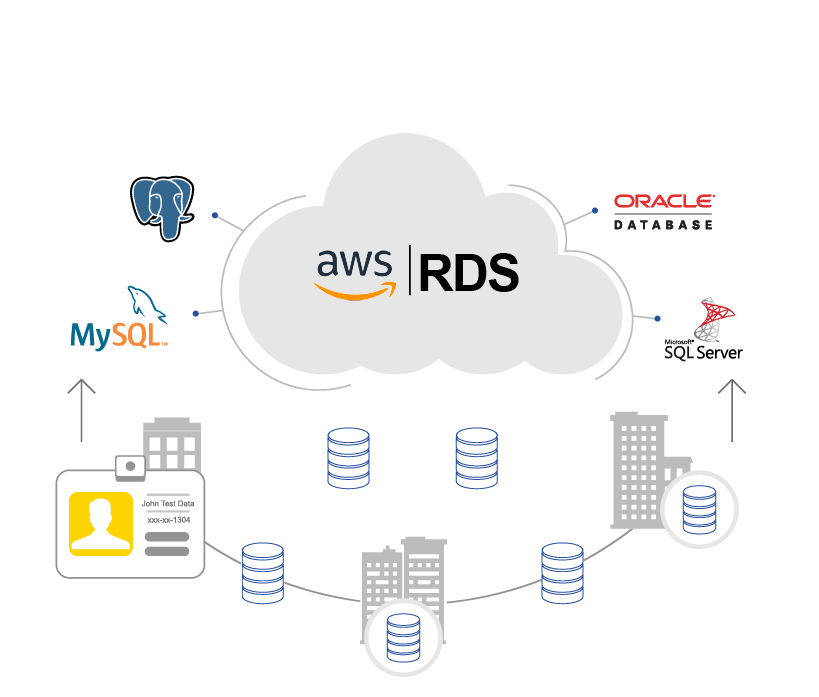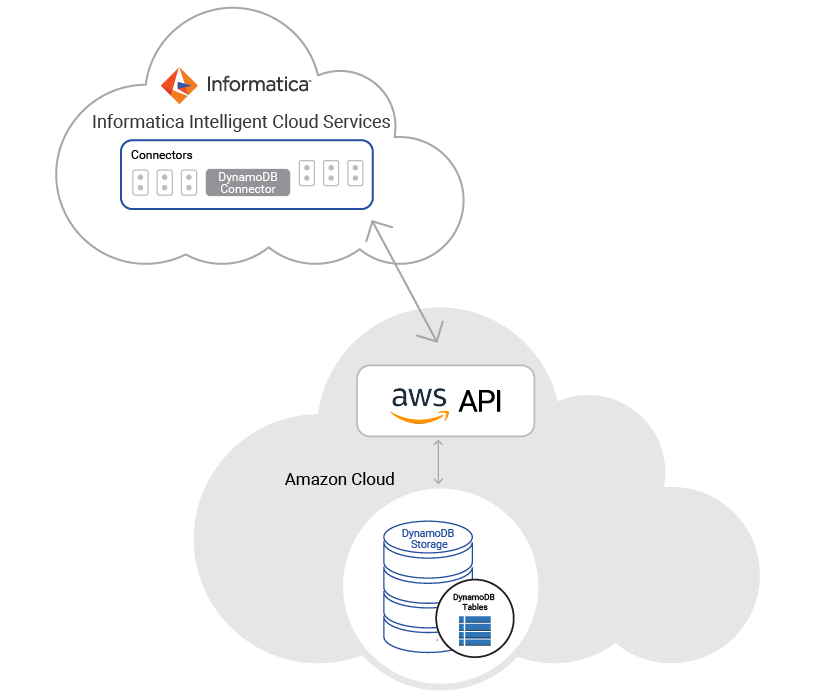com.informatica.core.model.PersistentInlineNavigationElement@6224834c

Cloud Integration for Amazon Redshift
Amazon Redshift provides high-performance cloud data warehousing via a fast, fully managed, petabyte-scale data warehouse service that makes it simple and cost-effective to efficiently analyze all your business data—especially when compared with traditional solutions. The Informatica Intelligent Cloud Services integration solution for Amazon Redshift is a native, high-volume data connector that enables you to quickly and easily design petabyte-scale data integrations from any cloud or on-premise sources to any number of Redshift nodes, and to gain rapid business insights.
Learn morecom.informatica.core.model.PersistentInlineNavigationElement@a41eba9
Cloud Integration for Amazon S3
Amazon S3 provides object storage for a wide variety of unstructured data in the areas of content distribution, backup and archiving, disaster recovery, and big data analytics. Most Amazon EC2 users get their billing data as zipped files inside S3. AWS customers can analyze their billing usage by using the Informatica Cloud Connector for S3 to move data into Redshift for analytics purposes.

com.informatica.core.model.PersistentInlineNavigationElement@42dff2c2

Cloud Integration for Amazon RDS
Amazon RDS is a web service that makes it easy to set up, operate, and scale a relational database in the cloud. It provides cost-efficient and resizable capacity while managing time-consuming database administration tasks. The Informatica Intelligent Cloud Services integration solution for Amazon RDS enables you to easily design and deploy high-volume data integrations from any cloud and on-premise sources to RDS instances with full support for RDS-compatible database engines including MySQL, Oracle, Microsoft SQL Server, and PostgreSQL.
Try & buy on AWS Marketplacecom.informatica.core.model.PersistentInlineNavigationElement@1ed2c2fd
Cloud Integration for Amazon DynamoDB
Amazon DynamoDB is a NoSQL database that can be used to ingest data at low latencies because it doesn’t require adherence to the traditional RDMS structure. It also supports both document and key-value data models. Companies in the social, mobile, gaming, or advertising space have sub-millisecond requirements when it comes to processing their data and use a NoSQL database such as DynamoDB to store their interactions. Informatica Intelligent Cloud Services abstracts several hierarchies of key-value pairs through the native connector for DynamoDB and allows this data to be analyzed in an analytics database such as Redshift so that companies can better understand their user interactions.

com.informatica.core.model.PersistentInlineNavigationElement@26a0bd74
Cloud Integration for Amazon Aurora
Amazon Aurora is a MySQL-compatible, relational database engine that is part of Amazon’s RDS service, but is distinguished by having five times the throughput of standard MySQL running on the same hardware. Its fault-tolerance, low-latency, and automatic failover make it a good candidate for web-scale applications, Internet of Things (IoT), and online transaction processing use cases requiring high throughput. Companies looking for a highly performing relational database without the pain of management and administration can use Informatica Intelligent Cloud Services to migrate data from on-premises databases to Amazon Aurora. Informatica Intelligent Cloud Services can also help synchronize data from other cloud and on-premises applications between regular MySQL on Amazon RDS and Amazon Aurora for those companies that want separate database tiers for low-latency applications versus regular applications. Finally, Informatica Intelligent Cloud Services, through its Advanced Cloud Mapping Designer, helps load transactions from Aurora into Redshift for in-depth analytics.
Try & buy on AWS Marketplacecom.informatica.core.model.PersistentInlineNavigationElement@66df9820
Cloud Integration for Amazon EMR
Amazon Elastic MapReduce (EMR) is based on Hadoop, and offers a proven technology for storing files and processing data in a highly distributed manner. When faced with several different types of data from a multitude of data sources, a data lake based on Hadoop to analyze the data makes great sense. Loading data from multiple data sources into Amazon EMR is the first step in forming a data lake. The next step is analyzing this data. Considering that most Hadoop clusters consist of several terabytes of data, Amazon Redshift’s compression capabilities can help make sense of the enormous volume of data contained in these clusters. Informatica Intelligent Cloud Services’s pushdown optimization technology is well suited for both these use cases.
Get started




